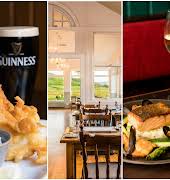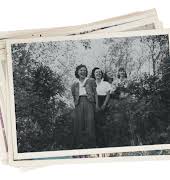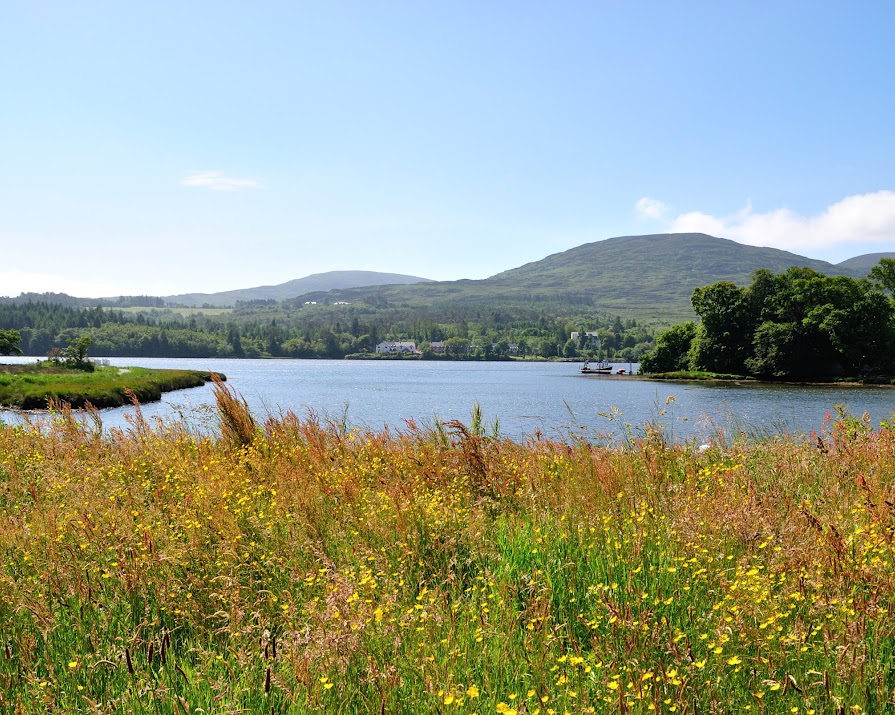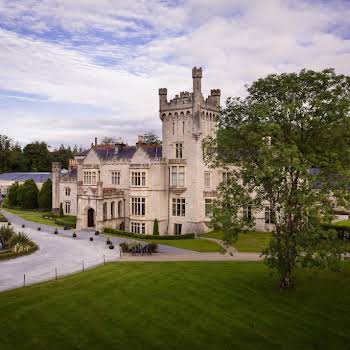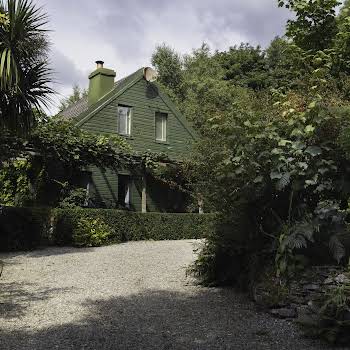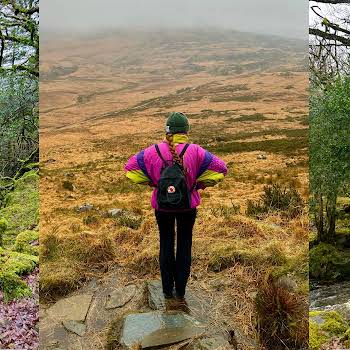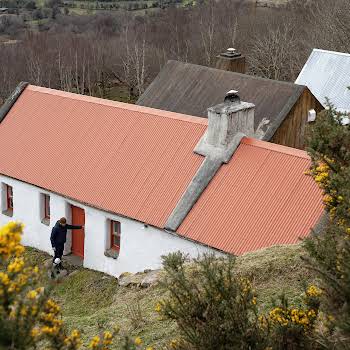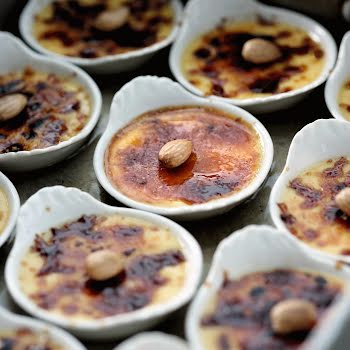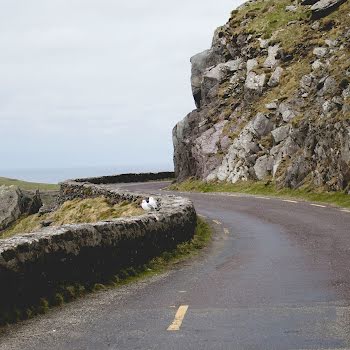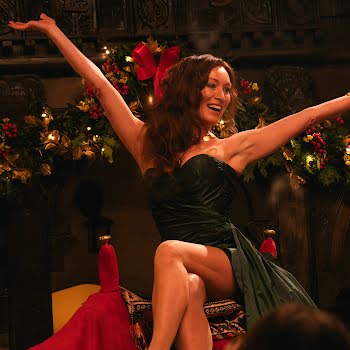
By Lucy White
24th Aug 2020
24th Aug 2020
If the lockdown has reawakened your love for nature, few places can surpass the pure beauty of Kenmare, Co Kerry – with a sprinkling of Garnish Island in Co Cork – whose wild landscapes are at once timeless and ancient
“Can you hear that?”
“Hear what?”
“Exactly.”
Being entirely enveloped by a natural soundscape of rushing water, songbirds and an exhaling breeze is a rare gift (the early stages of the coronavirus lockdown notwithstanding). Dublin ain’t Tokyo but still it hums with traffic, sirens, tooting trams, clattering trains and occasionally raucous stragglers, illuminated by a constellation of street lamps and eternally lit office blocks.
Even the coastline has a muffled white noise of industry, from parping boats to overhead planes and distant roads. It’s hard to find a spot devoid of manmade noise and light pollution in the developed world, but here in Kerry I find it, unequivocally. And it feels amazing.
We’re nearly halfway through our guided hike on the Iveragh peninsula and engulfed in a palimpsest of glacial undulations, ancient oaks, crumbling walls, Famine-era potato plots, abandoned cottages, frolicking deer and hulking knuckles of red sandstone (so-called but actually grey), that, without an experienced guide, I would never notice. \
“Every one foot of bog represents one thousand years of time,” says our oracle John Moriarty – also the bar manager at Park Hotel Kenmare, where he has worked for 25 years – pointing at a mantle of peat with his hiking stick. He also refers us to the frizz and crust of different lichen growing on trees – Mother Nature’s barometer of clean air – and a gall wasp pod. This city slicker has a lot to learn.
Sense of drama

Ireland’s natural riches are world-renowned and you don’t have to travel too far from the bright lights to find swathes of green, stout-black lakes, yellow gorse and dramatic coastline. Parts of the peninsula, though, feel like worlds and lifetimes away, the topography untouched by modern life. It’s the largest of Kerry’s Atlantic peninsulas and includes the magnificent Killarney Lakes and the Macgillycuddy Reeks mountain range, which boasts two of Ireland’s highest summits, Carrauntoohil at 1,038 metres and Caher at 1,001.
The Kerry Way, in its entirety, is 230 kilometres, but we’re hiking a 12-kilometre section with John, who guides hotel guests every Saturday. We scale ochre valleys and stepping-stone rivers, and pass only four other hikers during our two-and-a-half-hour walk, the gurgle of fresh running water a constant. It’s not for the faint-hearted – or rather, the weak-ankled or puff-breathed (me) – but once you reach the highest part of the climb at Windy Gap, some 385 metres above sea level, the views are spectacular. It’s only when we make our way back to Kenmare town that we’re reminded of “civilisation”: sites of the old fever hospital and workhouse.

Another life-affirming, cobwebs-blowing, calf-muscle-busting hike is in Gleninchaquin Park (gleninchaquinpark.com), 12 kilometres southwest of Kenmare on the northwest side of the Beara peninsula. It’s a 600-hectare park owned by five generations of the Corkery family and it couldn’t be any more picture perfect than if Paul Henry painted it. In fact, the short drive to basecamp will almost certainly provide a quintessential John Hinde moment: sheep crossing the road. This sets the scene for my two-hour hike, where we are outnumbered by sheep and lamb. We don’t pass even one walker.
My guide this time is Brendan Grant, the head gardener of 13 years at Sheen Falls hotel, a self-taught botanist, musician and thespian (“nothing ever happens in Kenmare so you have to make things happen”). A fountain of local knowledge and intrepid tales – he has recently spent six weeks travelling around India – he is great company as we ascend the mighty 140-metre-high waterfall, passing the ominously dark-watered but trout-rich Cummeenadillure Lough and marvel at stoneflies, another environmental indicator that the lakes are pollution-free.
The walk from beginning to end is only around four kilometres but the terrain is at times unwieldy and mostly uphill. It’s undeniably well worth the effort but my legs are palpably relieved when I later saddle up for an hour’s horse ride from Sheen Falls’ stables. Owner and horsewoman Joyce Canavan and I clip-clop along the roads due to an unprecedentedly wet winter and spring, the fields are perpetually boggy (muddy ground means muddy horses). But our leisurely pace, interrupted by only a few passing cars, is a simple pleasure.
Sprinkling of Garnish

And from four legs to sea legs: no trip to southwest Ireland is complete without a trip to Garnish Island, on Bantry Bay in Co Cork. It’s around a half-hour drive from Kenmare and involves a glorious short ferry crossing from Glengarriff, passing blubbery, bemused seals languishing on rock formations. Our skipper also points out a huge nest atop a tree – home to a pair of white-tailed eagles thanks to a reintroduction programme in 2011. The raptors, once native to Ireland, became extinct until recent breeding efforts: 2016 marked the first successful fledgling in 125 years.
If the Iveragh and Beara peninsulas are about untamed nature, Garnish Island is an exercise in Edwardian restraint and whimsy. The island was a rocky outcrop when the Scottish businessman and MP Annan Bryce purchased it from the War Office in 1910 but became an enchanting 15-hectare paradise thanks to the vision of his formidable wife Violet (a cousin of Countess Markievicz and Eva Gore-Booth) and the skills of the English landscape architect Harold Peto and gardener Murdo Mackenzie.
Just as the Bryces had amassed artefacts and curios from their international grand tours – many of which are displayed in the fascinating Bryce House – they also collected exotic plants that continue to flourish in the warmth of the Gulf Stream. Italianate, Japanese, Robinsonian and walled gardens, a Martello tower, Grecian temple, casita and a “jungle” all conspire to a magical effect: one expects to turn a corner and see a fairy, nymph or Tuatha de Danann.
In the 1920s, George Bernard Shaw regularly frequented Garnish Island while writing his play Saint Joan, which was likely inspired by the Bryce’s daughter Marjory, who led a procession on horseback dressed as Joan of Arc at the Women’s Coronation Procession in London in 1911, leading 40,000 women from almost 30 suffrage organisations. As the legend goes, Violet bid George farewell at the slipway, saying “Goodbye Shaw. I hope we meet in Heaven”. He looked at her and quipped: “Madam, are we not here already?” The same could be said of this beatific southwestern region.
KENMARE ESSENTIALS

National treasures Francis and John Brennan continue to maintain exceptional service at Park Hotel Kenmare, which is why so many locals hang out here for weekend lunch, afternoon tea and dinner. Well-trained staff, expert in the fine art of banter, deliver five-star service in a handsome, pristine, historic property filled with antiques and curios. In the fine-dining lounge, book a window seat for views of the bay and linger over noteworthy dishes, such as a piquant potted crab starter followed by a perfectly rendered steak and jumbo chips. (Shelbourne Street, Kenmare, 064 664 1200)
Sheen Falls Lodge estate has a large footprint – but it has just 66 well-turned out guest rooms and suites. This means generous-sized accommodation and furniture to match: the Oscar Suite’s bed is big enough for three (not that we tried, honest), while there’s ample space for bucolic strolls, playing tennis, horse riding and navel-gazing across various bodies of water, from Kenmare Bay and the Sheen waterfall of its namesake, the gush of which helps drown out snoring bedfellows. Food is exceptional at both the bar and fine-dining restaurant, where ingredients are farm, and river, fresh: salmon is caught on the estate and home-smoked, while organic vegetables come from up-the-road suppliers. (Gortnadullagh, Kenmare, 064 664 1600)
On the Ring of Kerry, Ladies View – so-called because it’s where Queen Victoria’s minions reached their summit (their horse-drawn carriage couldn’t take them any further, nor could their crinoline and corsets) – is also the location of Altitude Café, an excellently priced rooftop pit-stop with – you guessed it – incredible panoramas.
Passenger ferries to Garnish Island run from April until October and leave Glengarriff Pier every 30 minutes. Entry to the Bryce House costs a further €5 and includes a guided tour.
This story was first published in CARA, the inflight magazine for Aer Lingus, in summer 2018
Read more: Long read: Irish hotels – what to expect when they reopen
Read more: Step straight onto the sand with these 5 Irish hotels on the beach
Read more: 5 best activity getaways to book in Ireland now

